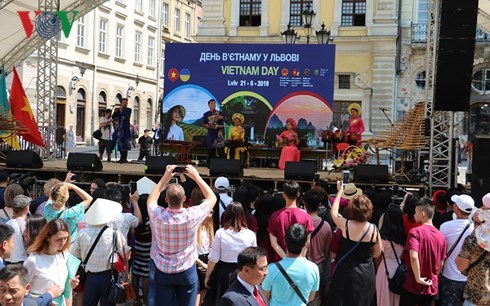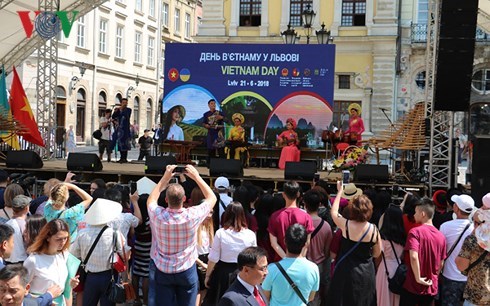



A photo of the "Vietnam Day" programme held in Lviv city of Ukraine (Photo: VOV).
The event was co-held by the Embassy of Vietnam in Ukraine and the Vietnamese Ministry of Culture, Sports and Tourism, the Vietnam-Ukraine Friendship Association and local authorities.
Organised in western Ukraine for the first time, the "Vietnam Day” saw the participation of Vietnamese people across the nation as well as in neighbouring countries such as Germany, Poland and Hungary.
The programme featured a series of activities, including fairs introducing Vietnamese goods and cuisine, along with seminars on tourism cooperation and a photo exhibition on Vietnam’s landscapes and people.
A highlight of the event was an art programme with Vietnam’s traditional instruments performed by artists of Vietnam and overseas Vietnamese (OVs) from Ukraine’s cities of Kiev, Odessa and Kharkov, attracting many people and tourists in Lviv city.
At the opening ceremony, Vietnamese Ambassador to Ukraine Nguyen Anh Tuan stressed that the event was designed to introduce images of Vietnam to Ukrainian friends in the western region and tourists in Lviv, thus deepening the Vietnam-Ukraine traditional friendship.
It also aimed to enhance mutual understanding of people and businesses of the two countries and foster the connection of Vietnam’s localities and agencies with Ukraine and Lviv city in particular, he added.
The event also offered chances for OVs in Ukraine and neighbouring countries to meet with each other and their Ukrainian friends.-
Source: VNA